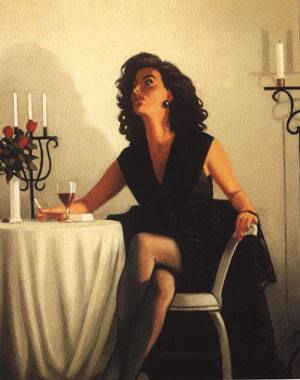
I’ve given up coffee; can’t drink the tasteless dark vapid liquid—Nescafe—they call coffee in the north of
India.
Instead, I drink masala chai, good black tea brewed with water, milk, ginger, cardamom, pepper, and sugar, presumably boiled three times.
Impossible to omit the sugar so I take it the way they give it to me.
Coffee withdrawal took a few days; French croissant withdrawal still goes on, but I confess I’m now addicted to masala chai and the white wonder toast with butter and sweet red stuff that comes with it each morning for breakfast.
Farooq, my excellent driver who looks like Yasser Arafat but is much sweeter, looks after me and takes me everywhere. By journey’s end we will have covered 3000 kilometers, crossing plains, valleys, deserts, visiting most major sites in Rajasthan. He has a four cylinder Maruti Suzuki car with air conditioning and a good supply of Indian Bollywood movie music, without either of which I can’t imagine this long, hot, dusty road trip.

The roads are excellent, newly built. Along the way we stop at small villages and roadside dhabas for steaming cups of chai tea and simple meals of spicy vegetables, baked parathas and fresh curds. Farooq, who comes from Kashmir and has never left India, asks me if Madonna has had plastic surgery.
We began our journey in Delhi, driving five hours to Jaipur, a pink stone city at the foot of the Aravalli Mountains. The massive Amber palace is my first taste of the fabulous architecture and extraordinary opulence of Rajput and Mughal princes, the forts, palaces and haveli, houses of nobles, that adorn Rajasthan, and there is more to come.
The artistry of the carving, details of tiles, ornate gold and silver, painting, stained glass, woods beats the great palaces of Europe. Stone, marble, ivory and wood are carved into delicate lace patterns for walls, balconies, and doors that allow light and air to enter but shield the perfumed women who hide behind them.
“It can’t get any better,” I say, but Farooq, who spends his idle time fiddling with his cell phone, says it w ill.
ill.
We push on to Bikaner, a small bustling town with another mind-boggling, intricately carved, spectacular palace-fort built in the desert. The architecture is fabulous, fairy tale fantasy. By contrast, the desert is bare; a straight road cuts through it; traffic is sparse but impressive and fascinating: big trucks decorated with colorful paintings and tassels, jeeps crammed with people and wares, overloaded busses with passengers sitting on the roof, army convoys going to tent camps in the desert, flocks of sheep and goats kept in tow by turbaned shepherds, camels pulling wagons, groups of colorfully dressed, bejeweled women walking along the roadside with bundles of twigs on their heads, and, of course, cows who go where ever they want.
The beauty of the Fort that dominates the old town of Jaisalmer takes my breath away. The walls of the old houses in the bazaar are built of the same filigree stonework with balconies overlooking narrow cobbled alleys. This town is a busy bazaar from end to end. Walking through it, like every other market in India is a challenge: shopkeepers implore you to enter and look at their wares. “Looking is free,” they say, offering spicy cups of tea while displaying their goods and haggling over prices. I’m certain the merchants I bought from got the better of me.
We drive through the Thar desert in Northwest Rajasthan to Jodpur, where the massive fortress of Mehrangarh, carved from a hilltop like Mount Rushmore, makes a startling appearance. The interior is straight out of Arabian nights. In the ladies chambers I admire beautiful artifacts of daily life including ivory combs and a pair of free weights shaped like baseball bats with handles, carved of wood, inlaid with silver and ivory. Not only did the ladies wear beautiful clothing and jewelry but they worked out!
Miniature paintings depicting palace life show the raja on a throne in the midst of his magnificent possessions, smoking opium from his hookah, gazing dreamy-eyed at the many beautiful women who dance, and, no doubt, do everything else for his pleasure.
Before I leave the palace I visit a palm-reader who tells me I will sell my book but my publisher will not be generous. Outside in the bustling marketplace I eat the best lassi I ever tasted; sweet and unctuous, flavored with lemon, saffron and cardamom, topped with a dollop of stiff whipped cream. I want to open a branch in West Hollywood. I stop into the most famous spice shop in Rajasthan and buy a packet of spice for masala chai—my new addiction which I’ll continue when I return home.
Still ahead are visits to Ranakpur, Udaipur, and Pushkar before returning to Delhi. This has been a trip of a lifetime. I’m exhausted from the many hours of dust and heat on the road, encouraged by Farooq, revived by hot showers and simple good food, invigorated by people I meet, re-energized by astonishing sights, and exhilarated by the magnificent palaces of Rajasthan.

 I’ve given up coffee; can’t drink the tasteless dark vapid liquid—Nescafe—they call coffee in the north of
I’ve given up coffee; can’t drink the tasteless dark vapid liquid—Nescafe—they call coffee in the north of  ill.
ill.



0 Comments:
Post a Comment
Subscribe to Post Comments [Atom]
<< Home